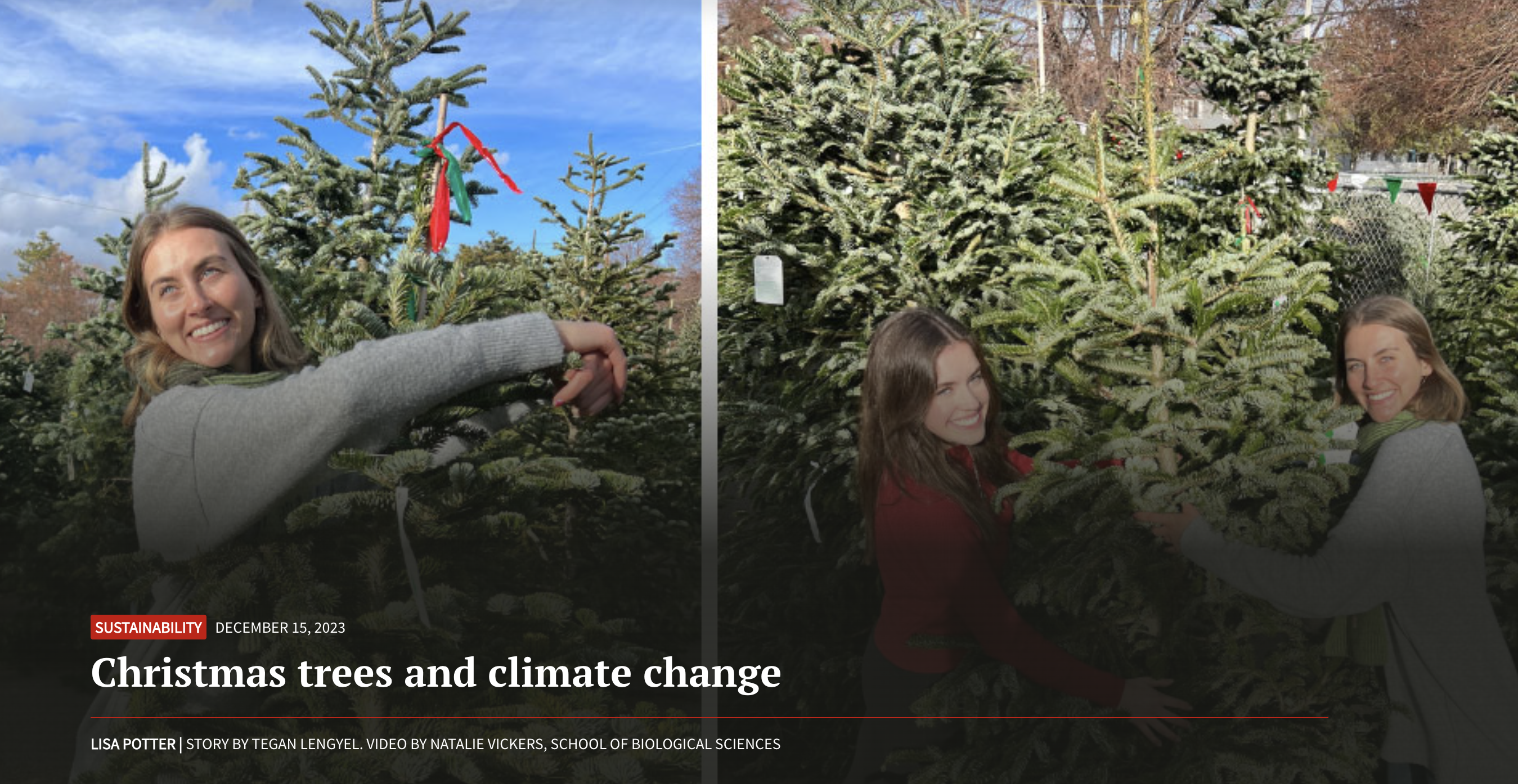
Small choices can make a big impact this holiday season, starting with your Christmas tree! As Douglas firs and white pines appeared in lots around Salt Lake City, Natalie Vickers, a junior pre-occupational therapy major and video intern at the School of Biological Sciences, got curious—how does the tree-trimming tradition fit into a changing climate? Vickers spoke with Tegan Lengyel, a doctoral student in Dr. William Anderegg’s lab, who explores how forests are responding to drought, wildfire, and other stressors caused by climate change. Watch the video or read below for their discussion of what Christmas tree will be best for you and the environment.
https://youtu.be/w2JN4LLjzEM
What are the different options for Christmas trees and their impacts?
Lengyel stressed that plastic trees leave a permanent footprint on our planet, whereas real trees provide benefits both during and after the life of the tree. While it might seem like a reusable plastic tree would be better for the environment than a live one that needs to be cut down every year, this is not the case.
“Plastic trees produce roughly 10 times the amount of carbon in their life than a real tree,” Lengyel said. “This can equate to roughly 2 billion pounds of carbon for plastic trees, in comparison to 200 million pounds for real trees, based on the average sales each year.”
The production of plastic Christmas trees not only produces large amounts of carbon dioxide but also uses chemicals that are harmful to human and environmental health. When people dispose of their Tanenbaum, the trees take a long time to degrade and break down into microplastics that are bad for the environment. A better option is that of a real Christmas tree.
Where do we look for an environmentally friendly Christmas tree?
Real Christmas trees can be acquired through growing them in a tree farm, or through thinning densely grown areas of local national forests by obtaining a yearly permit through the U.S. Forest Service. Obtaining a permit to harvest your own Christmas tree from local National Forest land is likely the most environmentally friendly option, as it avoids the use of pesticides and fertilizers from tree farms that can pollute local waterways. However, both options can greatly reduce the overall carbon impact of Christmas tree traditions, compared to purchasing a plastic tree, and can provide benefits for the forests themselves and local economies.
“Purchasing a tree from a local tree farm is a great way to support your community and farmers in the US while creating a minimal impact,” Lengyel said. “Taking the next step to get a permit from the U.S. Forest Service can even benefit the forest through thinning practices that prevent severe burning, decrease competition for water, and lower the risks of pests, all of which are an increasing concern in the wake of climate change.”
The benefits continue after the yuletide season. There are great recycling programs in your city or state! If you live in Salt Lake City, you can cut your tree into pieces and dispose of it in the city’s green waste bin, or leave it whole on the side of your street for collection—after removing ornaments, of course. The city will pick up your tree and use it to make compost! If you live outside of Salt Lake City, check out your local options—these depend on where you live.
So, what’s our best option?
The take-home message from Lengyel is that the benefits of real trees far outweigh the benefits of plastic trees. Being an informed consumer is a great way to individually combat climate change, and where you purchase your Christmas tree is a great way to apply this idea.
